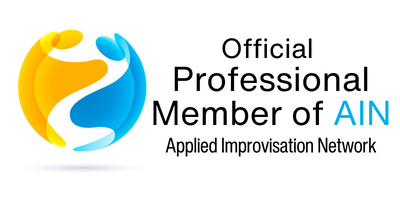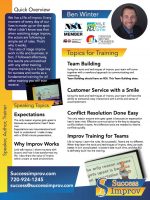Think on Your Feet: Integrating Improv Skills into Workplace Culture
In today’s rapidly changing work environment, adaptability and quick thinking are more valued than ever. As businesses face new challenges and opportunities, fostering a culture that encourages employees to think on their feet can be transformative. This is where the art of improvisation, or improv, comes into play. Once confined to comedy clubs, the principles of improv are finding their way into boardrooms, offering valuable skills for enhancing creativity, collaboration, and communication.
The Basics of Improv
At its core, improv is about being present, building dialogue, and adapting to unexpected scenarios. Unlike scripted performances, improv relies on spontaneous interactions, making it a perfect training ground for developing agility in the workplace. The essential rules of improv—such as saying "yes, and…" to build on ideas, active listening, and embracing failure—are directly applicable to today’s dynamic organizational needs.
Yes, And…: The cornerstone of improv, this principle encourages acceptance and addition. By acknowledging the contributions of others and building on them, teams can foster a more inclusive and innovative environment. This mindset is crucial in brainstorming sessions and collaborative projects, where the flow of ideas should be fluid and unhindered by premature criticism.
Active Listening: In improv, performers must be acutely aware of their partners to react appropriately. Similarly, workplace communication flourishes when employees genuinely listen to one another, leading to more effective problem-solving and decision-making processes.
Embracing Failure: Improv teaches participants to view failure not as a setback but as a stepping stone to creativity. In a corporate setting, this shift in perspective can encourage risk-taking and innovation without the fear of reproach.
Improv in Action: Success Stories
Several companies have successfully integrated improv techniques into their cultures. For instance, tech giant Google is known for encouraging a culture of innovation and has utilized improv workshops to help employees enhance their communication and creativity skills. These sessions are particularly valuable in breaking down silos and fostering a more collaborative atmosphere.
Moreover, organizations like IDEO and Pixar have long championed the principles of improvisation to boost their creative processes. By allowing team members to experiment and iterate, these companies have maintained their status at the forefront of innovation in their industries.
Implementing Improv in Your Workplace
To integrate improv skills into your workplace culture, consider the following steps:
-
Workshops and Training: Conduct improv workshops led by experienced facilitators who can tailor exercises to meet the specific needs of your team. These sessions can range from ice-breaker activities to more structured learning modules focused on communication and collaboration.
-
Regular Practice: Encourage ongoing practice of improv techniques. Set aside time during meetings for brief improvisational exercises or create a recurring event where employees can voluntarily participate in improv sessions.
-
Create a Safe Environment: Foster an atmosphere where employees feel safe to express ideas without fear of judgment. Emphasize the value of diverse perspectives and celebrate creative contributions.
- Leadership Champions: Encourage leaders and managers to model improv behaviors and support their teams in practicing these skills.
Further Reading and Resources
For those interested in delving deeper into integrating improv into workplace culture, the following resources offer valuable insights:
-
HBR: "How Improv Can Open Up the Mind" – This Harvard Business Review article explores how improvisational theater can challenge and expand thinking in a business context.
-
Forbes: "Why Improv Training is Great Business Training" – Forbes highlights the benefits of improv training in improving public speaking and listening skills.
- TEDx Talks: "Improvisation and How It Creates Innovation" – A TEDx talk discussing the link between improvisation and innovation, featuring real-life examples from various industries.
As organizations continue to navigate the complexities of the modern workplace, the integration of improv skills offers a promising path forward. By cultivating a culture that values agility, creativity, and collaboration, businesses can better equip themselves to thrive in an ever-evolving landscape.


